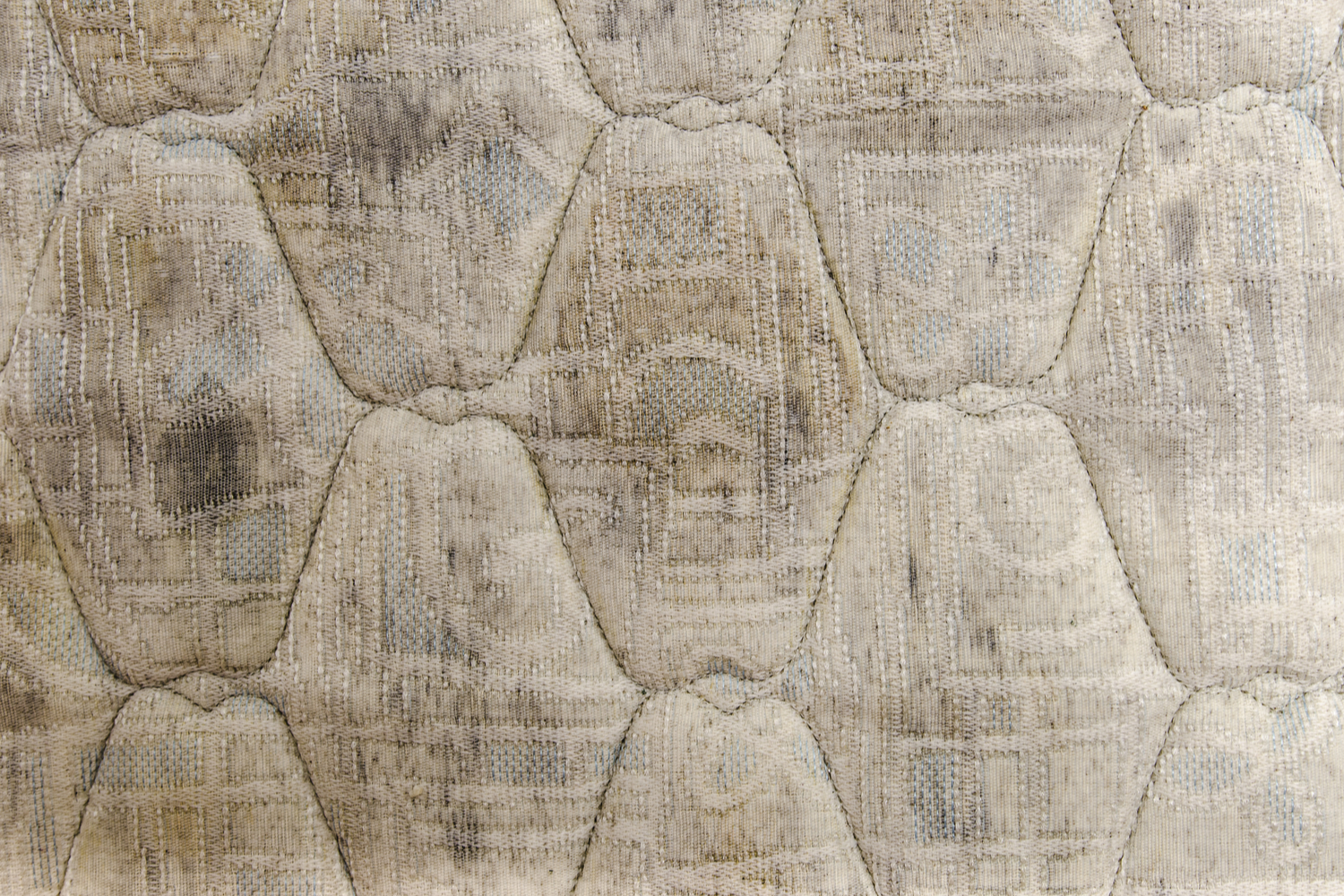Mold can develop in any mattress, not just an organic mattress or one of the memory foam ones. Water Mold Fire Restoration knows that most of us buy a mattress, place on our beds, and forget about it until it’s time to go to bed, or buy a new one. But if you take the time to actually read that pesky label that manufacturers place on a mattress, you will see instructions on what you should do to take care of it.
How Does Mold Grow and Spread
Mold is everywhere, even in your perfectly clean house. It is next to impossible to eliminate all mold from anywhere. It will come in through open windows or doors, on items you carry in, on your clothing and shoes, even on your pets.
Mold needs a dark, moist environment and a food source. Covers, sheets and curtains can provide the darkness. For moisture, sweat and saliva will do. For food, mold can use the cotton the mattress or your linens are made of, or dead skin cells, which we humans shed all the time.
Most of the time mold spreads from one place to another by releasing spores that are microscopic and seed-like. Mold spores are easily airborne, and if you think about how you make your bed, you will see how the spores can be spread around your house. The mold spores will float around, and hopefully for them, land somewhere where the is additional moisture and a brand new food source. In the worst case, you, or a member of your family, may be exposed to them and inhale them.
How Do You Recognize a Mattress Mold Problem?
At first you probably won’t notice a problem. However, as the mold colony grows larger, you probably will. One of the first indicators that is usually noticed will be a persistent, musty smell. The odor may not be very strong at first, but it will be noticeable as soon as you get close enough by laying your head down.
Next you might start having unexplainable health issues. These symptoms usually disguise themselves as an allergic reaction: sneezing, coughing, itchy eyes, and congestion. These mysterious symptoms will probably go away once you get up and get away from the room.
Eventually, the mold will grow large enough to be seen during linen changing. The mold will look like a dark stain on your mattress. It could be shades of gray or black, depending a lot on where it is growing and how deep into the mattress it has grown.
Steps for Removal
Many times this comes down to personal feelings. Should you attempt to clean the mold or just throw the mattress out and replace it? If you do decide to attempt to clean it, remember that little label. It will more than likely have instructions from the manufacturer as to how to best clean the mattress, so start there.
Begin by vacuuming as much mold as possible from the surface of the mattress. Use only a HEPA-rated vacuum cleaner. A HEPA-rated vacuum will prevent any mold spores that are being sucked into it from blowing through the vacuum system and back out into the air where you might inhale them.
Mix a solution of warm water and rubbing alcohol at a 1:1 ratio. Using a clean cloth, wipe the affected surface area. Be sure to clean a slightly larger area than what is visible. Never re-wet the cloth in your solution after using it on the mattress, use another clean cloth. You don’t want to contaminate your cleaning solution. Try not to soak the area and when finished, wipe the surface as dry as possible.
Next, using a disinfectant spray, apply the disinfectant to the entire mattress. Make sure that the disinfectant is safe to use on fabrics. Now your mattress needs to be exposed to sunlight. Carry it outside if possible, if not try to place it near a window that receives a lot of light. Sun is mold’s most hated enemy.
Steps for Prevention
Need we say that the first step you should take is to always try to keep your mattress as dry as possible. Here are some things about your mattress to consider:
- NEVER lie down on a mattress if you are still wet from the shower, tub, or pool.
- If you use a mattress cover, buy one that is BREATHABLE.
- Change the sheets often. This will cut down on the amount of dead skin cells and sweat present in the linens and on the mattress.
- If you have just washed your hair, dry it completely before lying down on your bed.
- Don’t pile damp or dirty clothing on the mattress. This will also and organics and moisture.
- Flip or rotate your mattress on a regular schedule. Flipping is better.
Determine the Cause of the Mold
If you choose to forego the above cleaning, and decide to just go ahead and replace your mattress, you need to figure out why the mold showed up in the first place. Otherwise you could soon have the same problem as before, only this time on a brand new mattress.
Where is all the moisture coming from? Do you have some type of water leak? Water could be coming in a window. Is your bedroom right next door to the bathroom? There could be a hidden leak in the bathroom that hasn’t been discovered yet.
If you find mold or discover a water leak, or maybe you just need help finding the origin of your problem, contact Water Mold Fire Restoration at 800-905-0277. We have certified mold and water damage remediation teams standing by 24/7. These certified damage specialists will come to your home to assess the damage. Then they can offer you a plan to eliminate any mold or water damage problem that you may have. If you prefer any additional information about mold remediation or water damage restoration, we can also be contacted by email at help@watermoldfire.net.








